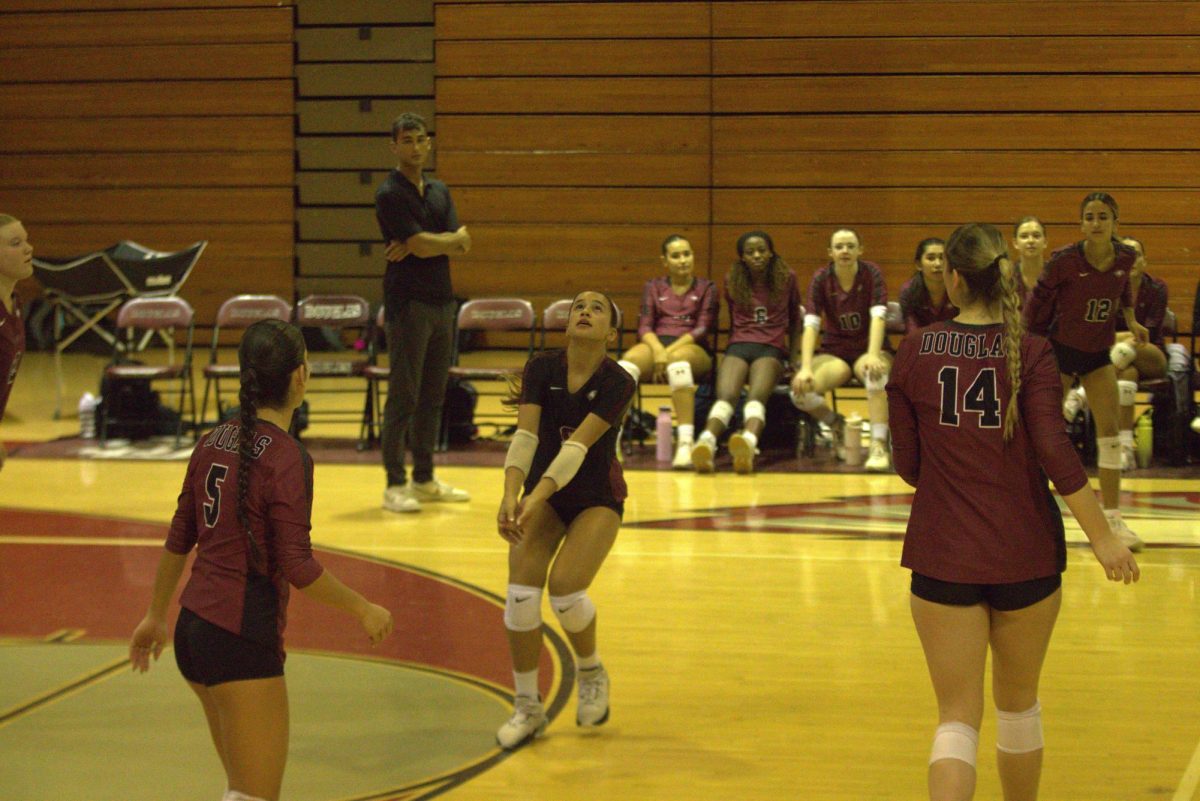Students reflect on the aspects they miss about in person school
Students stand with eachother in the courtyard before the COVID-19 pandemic. Photo by Brianna Jesionowski
May 9, 2021
As the end of the 2020-2021 school year approaches, many students have begun to reflect on their school life before the pandemic. Due to COVID-19, schools across the country have been closed on account of social distancing and transmission concerns. Students and teachers have used several virtual learning platforms, such as Microsoft Teams, Zoom and Google Meets throughout the academic year in order to conduct virtual education. Although learning from home may not be considered a crisis, the experience is not nearly the same as physically being on campus.
Not only has the pandemic minimized interaction among students, but it has affected the efficiency and understanding of academic material as well as student involvement in after-school clubs and sports.
“One thing I miss most about school is connecting with your peers and making new friends,” Marjory Stoneman Douglas High School freshman Ronel Chery said.
Quarantine during the current pandemic has made physical interaction heavily restricted due to social distancing requirements and has resulted in mass closings of high-density gathering places such as restaurants, schools and movie theaters were closed.
In-person school offers a learning environment that allows students to reflect on and absorb the material presented to them. Although some may have an area in their house designated solely for school, students may still get distracted in such an environment.
“It’s easier for me to learn in person rather than online,” sophomore Naina Jena said. “In-person school is easier for me because when I’m sitting in the classroom with the teacher, they’re watching me so I won’t distract myself with things around me at home, therefore, forcing me to concentrate on the lesson at hand.”
Without being physically present in class, not only is it a challenge for students to adapt to their new learning environments, but also for teachers to know if the students are even understanding the lesson or utterly confused.
Multiple students have resorted to Google or the internet when having misunderstood information taught to them.
“School has become extremely difficult, you’d think it would be easier, being that cheating is available, but most students like me want to learn and there are more loads of work now,” sophomore Rachel Georges said.
Alongside not understanding the lessons, students are also losing interest in their education through a lack of concentration and motivation.
“Without in-person [conversation] with my teachers, I get tired and bored staring at a screen for hours, making it difficult to actually learn anything,” Georges said.
After-school activities, such as sports and clubs have also been drastically affected as a result of the pandemic.
“I do miss in-person learning. It is difficult to participate in after-school clubs because most clubs involve physical interaction and working together,” freshman Emiley Pullease said.
“However, with learning online, it is not as easy to work with your peers.”
Teachers have also had a difficult experience with learning how to cope with this global outbreak. Research portrays that stress among teachers can affect students and vice versa. But having said that, teachers still try their best to illuminate the basics of the subject to their students.
“At first I was really overwhelmed because before this year and even before we first started going online last year, I didn’t really use Canvas that often,” Algebra two Honors teacher, Donna Numeroff said. “So we learned a lot of new things on how to use Canvas effectively and then some other software apps and things like that to help us to be able to teach online so that was really overwhelming.”
Clearly, COVID-19 has impacted the learning process of many students across the world while threatening safety, mental health and wellbeing. In these times, resources are provided to aid students to their success.











